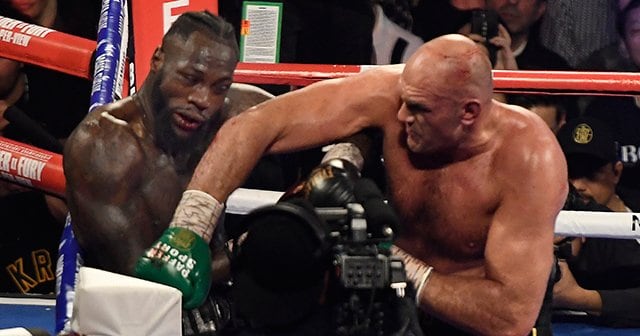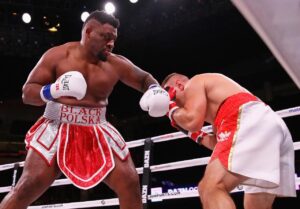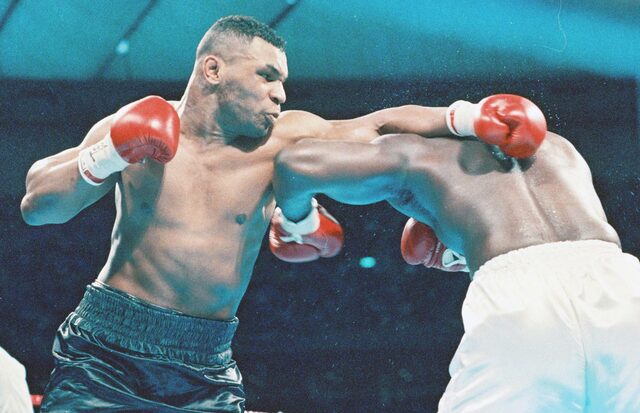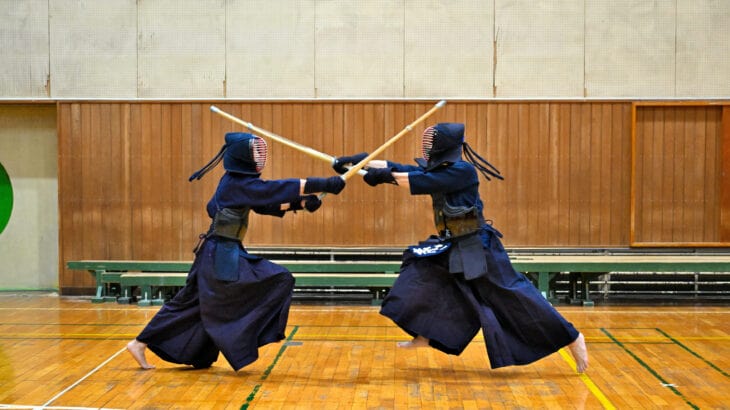
Boxing is one of the most beloved sports around the world, with many fans focusing on specific weight classes depending on their preferences.
However, there are some classes that are particularly popular and others that are not.
The reality is that while the popular weight classes attract a lot of attention and excitement and often produce star athletes, the unpopular weight classes have fewer opportunities to shine.
In this article, we’ll take a deep dive into the various weight classes in boxing and why they are popular and which are not.
For fans, it will be an opportunity to rediscover the reasons why their favorite classes are popular and the charm of unknown classes.
Now, let’s take a look at the bright and dark, popular and unpopular classes in the boxing world.
目次
- 1 Popularity of boxing weight classes: Top rank and other weight classes
- 2 Which class is popular? Boxing popularity ranking by class
- 3 Popular and unpopular classes in boxing by region of the world
- 4 Why is there a difference? Delving into the background of boxing’s popular and unpopular classes
- 5 Boxing fans choose! What is the most enthusiastic class?
Popularity of boxing weight classes: Top rank and other weight classes
The popularity of each weight class in the boxing world has a major impact on fan interest, media exposure, and excitement for a tournament.
In some weight classes, each fight attracts a lot of attention due to the performance of world-famous star fighters.
These weight classes often command the hefty prize money and media attention, and drive the popularity of the sport as a whole.
In contrast, some classes, despite their appeal, may receive less coverage from mainstream media.
This may be due to the lack of star players, the size of the fan base, or even the quality of entertainment that class battles provide.
However, these classes have dedicated followings, creating their own unique appeal and passionate fan communities.
Popular weight classes such as welterweight and middleweight attract fans with fights that combine technical sophistication and physical power.
These weight class fights feature a high level of speed, skill and strategy, providing a thrilling viewing experience.
On the other hand, weight classes such as lightweight and super heavyweight, while popular with specific regions and niche fan groups, receive slightly less attention overall.
These classes offer different types of battles and unique tactics and strategies.
The highlight is his amazing speed and technique in the lightweight division, and his overwhelming power and force in the super heavyweight division.
As you can see, boxing’s popularity varies by weight class, each with its own appeal and fan base.
There is still a class that is like a hidden gem, and the more you dig into it, the more you realize its deep charm.
For fans, finding a weight class that suits their tastes and immersing themselves in its unique world is one way to enjoy boxing.

Which class is popular? Boxing popularity ranking by class
In the world of boxing, each weight class has its own unique appeal and fan base. The players’ skill, style, and fighting spirit give each weight class its unique color.
Here, we will introduce the ranking of boxing’s popularity by weight class and explore why certain weight classes receive high praise from fans and the media.
Boxing popularity ranking by class
1. Welterweight
Welterweight has long been one of boxing’s most popular weight classes, boasting the perfect balance of skill and power. Historically, many legendary battles have taken place in this division, which continues to captivate fans around the world.
2. Middleweight
The middleweight division is the second most popular after the welterweight division, and attracts many fighters who combine strong punching power and technical sophistication. Fights in this weight class are often high-profile events throughout the boxing world.
3. Heavyweight
The heavyweight division is known for its powerful fighting, especially when it comes to the power of its punches. In the past, this weight class has produced many legendary champions and is considered the face of boxing.
4. Lightweight
The lightweight division attracts fans with its quick movements and technical strategies. Athletes in this weight class often decide on speed and skill, and matches are always unpredictable.
5. Super Featherweight
Super featherweight has characteristics similar to lightweight, but is characterized by more dynamic fighting. Matches in this weight class require a perfect balance of speed and power.
Other ranks of note
- Super Heavyweight : Particularly popular in amateur boxing, and is known for its intense power.
- Featherweight : There are many fighters who have both skill and speed, and there are many matches that are worth watching.
- Light Heavyweight : A class that requires a high level of power and technique, and you can expect high-level fights.
The rankings are based on a variety of factors, including past history, current champions, media attention, and fan enthusiasm.
Each weight class in boxing has its own charm and drama, and fans can enjoy each from a unique perspective.
In every weight class, there are heart-pounding stories and breathtaking technical exchanges that make boxing a beloved sport around the world.
Particularly in the popular classes, star athletes and historic matches are a major factor in their popularity.
However, when we look at the unpopular classes, there are often undiscovered talents and unexpected surprises hidden there.
If you dig deeper into these classes, you’ll find that there are plenty of elements that appeal to fans.
For example, the super heavyweight division is attractive for its overwhelming strength and fighting dynamism, but it is often overlooked by fans who prefer more detailed techniques and strategies.
However, when you understand that there is more to it than just power, there is also sophisticated technology and calculated strategy, and a new appeal begins to emerge.
Additionally, weight classes such as featherweight and light heavyweight, which are admired for their speed and skill, tend to be overshadowed by major weight divisions such as heavyweight and welterweight.
Athletes in these weight classes also use their skills and passion to convey the appeal of boxing to the world.
Boxing’s popularity rankings by weight class are just one indicator. If you are a true boxing fan, you should be able to look beyond rankings and find the unique appeal of each weight class and draw inspiration from each fight.
Each weight class has a different story, and each one shapes the richness of the sport of boxing. That’s why boxing continues to be loved by a wide range of fans.

Popular and unpopular classes in boxing by region of the world
Boxing is enjoyed all over the world in a way that is rooted in the culture and history of each region, and the classes that are more popular and those that receive less attention differ depending on the country or region.
Here we introduce the popular and unpopular boxing weight classes in each major region of the world.
North America (particularly the United States and Mexico)
- Popular weight classes: welterweight, middleweight, heavyweight
- Unpopular weight class: Light flyweight, flyweight
Welterweights, middleweights, and heavyweights are very popular in North America, especially as they are expected to deliver powerful strikes and dramatic KOs.
These weight classes have historically featured many legendary players. The lighter weight categories, on the other hand, tend to receive relatively less attention.
Latin America (excluding Mexico)
- Popular weight classes: Featherweight, Super Featherweight
- Unpopular weight classes: super heavyweight, cruiserweight
Latin America traditionally has a culture that emphasizes speed and technique, with weight classes like featherweight and super featherweight being particularly popular.
These weight classes often feature fast-moving, tactical matches. The heavier classes, on the other hand, are relatively unpopular.
Europe
- Popular weight classes: heavyweight, cruiserweight
- Unpopular weight classes: minimumweight, light flyweight
In Europe, heavy weight classes like heavyweight and cruiserweight are traditionally popular.
This is because many historical champions have come from these weight classes, and they tend to favor powerful fights.
The lightweight class receives less attention.
Asia
- Popular weight class: Light flyweight, flyweight
- Unpopular weight classes: super heavyweight, heavyweight
In Asia, lightweight weight classes such as light flyweight and flyweight are very popular as many athletes are relatively light in weight.
Matches in these weight classes are characterized by technical, fast-paced fighting. The heavyweight division has fewer participants and is generally less popular.
Africa
- Popular weight classes: welterweight, middleweight
- Unpopular weight classes: super featherweight, lightweight
Middleweights like welterweight and middleweight are particularly popular in Africa.
This is due to the balance .
These divisions, where many African athletes have achieved success on the international stage, also have strong local community support, and young talent continues to emerge.
On the other hand, lightweight classes such as super featherweight and lightweight have received relatively little attention and have had few success stories in international competitions, so their popularity within the region is also limited.
Oceania
- Popular weight classes: heavyweight, super middleweight
- Unpopular weight classes: minimumweight, light flyweight
Heavyweight and super middleweight are popular in the Oceania region, especially in Australia and New Zealand.
This comes as some notable players from the region have achieved international success in these weight classes.
These weight classes require powerful punches and strategic play, providing a thrilling experience for spectators.
Although the lightweight division receives relatively less attention, it has a dedicated fan base.
overall trend
Overall, there are significant regional differences in the popularity of boxing classes, due to differences in body types and sporting preferences.
In areas where lightweights are favored, speed and technical strategy are valued, while in areas where heavyweights are favored, power and powerful fights are valued.
These trends are rooted in the cultural and social factors surrounding boxing, and they also influence the challenges and opportunities faced by athletes in each weight class.
Even in weight classes that are considered unpopular, there are many talented fighters and attractive matches, and you may discover something new by digging deeper into the local boxing scene.
Boxing’s popularity by weight class forms part of the ever-changing landscape of the sport, with fans, athletes and promoters wondering which weight classes are of interest in each region and which have potential for development. Understanding this is the key to further enriching this global sport.

Why is there a difference? Delving into the background of boxing’s popular and unpopular classes
The disparity in popularity between weight classes in boxing is due to many factors.
A complex interplay of factors, including player style, historical background, regional preferences, and media exposure, shape why certain weight classes are particularly favored by fans.
Here, we will explore the background to the differences between popular and unpopular classes in boxing.
Player style and strategy
Each class of boxing requires different styles and strategies. In the lightweight division, speed and technique are emphasized, and detailed point battles are often developed.
On the other hand, in the heavyweight division, the destructive power of one blow and physical strength are the keys, and many fans expect him to win by KO.
These style differences are directly linked to fan preferences and influence the popularity of certain classes.
historical background
Classes that have historically seen many great matches become popular due to their traditions and heritage.
For example, the middleweight and heavyweight divisions are highly popular as they have had many legendary champions and memorable matches in the past.
Fights in these weight classes are often talked about as part of boxing history, and they also attract new fans.
regional preferences
As mentioned earlier, different regions of the world have different body averages and cultural backgrounds, which tend to favor certain classes.
For example, in Asia, many athletes are relatively small, so the lightweight division is popular, while in Europe and America, there are many physically strong athletes, so the heavyweight and middleweight divisions are popular.
These regional differences greatly influence class popularity.
media exposure
Media exposure is also a factor that has a significant impact on class popularity. Classes that are frequently featured on television and online media receive more attention and, as a result, become more popular.
In particular, weight classes that are heavily promoted by prominent promoters or boxing organizations tend to attract a lot of attention.
Summary
The difference in popularity between boxing weight classes is not due to a single factor, but a combination of factors.
Fan expectations, cultural background, and media influence are intricately intertwined to shape the appeal and challenges of each class.
Even in the unpopular weight classes, there is a wealth of unique charm and undiscovered talent, and discovering and supporting them is an important step in expanding the diversity and richness of boxing as a sport.
In addition, by focusing on matches in less popular weight classes, fans can find new excitement and charm, providing a unique experience never seen before.
Players from unpopular classes also have their own stories and goals, and are chasing their dreams as well.
Their efforts and dedication often take place outside the media spotlight and are therefore often overlooked.
But by focusing on those stories, the world of boxing takes on a richer color and has the opportunity to gain new fans.
It is important for promoters, media, and fans themselves to pay attention to the disparity in popularity that exists between boxing weight classes, recognize the unique value and potential of each weight class, and support them.
This will contribute to the development of the boxing industry as a whole and ensure that fighters from different weight classes have equal opportunities.
After all, boxing’s appeal lies in its diversity.
From powerful fights in the heavyweight division to technical matches in the lightweight division, recognizing that each weight class has its own story and appeal and sharing it widely will enrich boxing as a sport. This is the key to
A major challenge and opportunity for the boxing world in the future is to go beyond the differences in popularity between classes and celebrate the individuality and charm of each class in boxing, and to foster a culture that supports them.

Boxing fans choose! What is the most enthusiastic class?
Boxing is a sport that continues to captivate fans with its intensity, tactics, and dynamism.
Each class has a different appeal and each has its own dedicated fan base, but some classes are especially fervent.
Here, we explore the most passionate weight classes chosen by boxing fans.
Heavyweight: King of Boxing
The heavyweight division is also known as the “king of boxing” and has reigned as the face of the sport for many years.
The appeal of this weight class lies in the overwhelming power of the fighters and the possibility of a KO that can decide a match in an instant.
Historically, many legendary champions have emerged from the heavyweight division and captured the attention of the entire sports world.
Therefore, heavyweight matches always generate high expectations and excitement.
Welterweight: A combination of skill and speed
Welterweight is a weight class that combines a high level of boxing technique and physical ability, and is enthusiastically supported by many fans.
Players in this class combine speed, skill, and power, and are characterized by strategic and dynamic play.
In the past, many historic matches have taken place in this class.
Middleweight: the most balanced weight class
Middleweight is also one of the core weight classes in boxing, and is known for its well-balanced fights.
Power, speed, and technique are all required at a high level, so fans always expect technically sophisticated matches.
Middleweight matches always excite the audience with their unpredictable developments and intense fights.
Lightweight: The pinnacle of speed and technique
The lightweight is known for his nimble movements and fast exchanges of punches. Athletes in this class fight using unparalleled speed and precise technique.
Lightweight matches are often the difference between victory and defeat based on subtle differences in technique, and are a real treat for fans who seek technical sophistication.
Summary
Each of these weight classes has its own charm and history, and each has a passionate following among boxing fans.
The different fighting styles depending on the weight class are one of the reasons boxing has such a diverse fan base, all of which enrich the world of boxing.
The heavyweight’s overwhelming strength, the welterweight’s skill and speed, the middleweight’s good balance, and the lightweight’s high-speed fighting represent different aspects of boxing, and are considered the most passionate weight classes by fans. It is natural that they are different.
The weight classes that fans are passionate about will vary depending on their individual tastes and the style of fight they seek, but what they all have in common is a passion for boxing and a love of the drama that unfolds during the matches.
The uniqueness of boxing’s weight classes shows its depth as a sport and provides fans with endless excitement.
The unique appeal of these classes is what draws new fans and keeps old fans hooked.
In addition, the fights that athletes in these weight classes put their mental, physical and mental skills on display make boxing more than just a sport.
It is a human drama in which victory and defeat, glory and setbacks, hope and despair intertwine, and this is the biggest reason why fans are so excited.
There will continue to be countless dramas in the boxing world in various weight classes.
There is no doubt that the unique charm of each class will continue to fascinate fans around the world.
Boxing fans’ most passionate weight classes may change over time, but the love and enthusiasm for boxing will never change.




